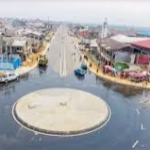
Sometimes, the resources you are counting on may not be available when they are scheduled to be. How do you know when your project cannot be successfully completed? In this article, we want to thank about some of the ways to identify critical path for projects.
The answer is that you must identify the critical path when developing the project schedule. In this article, I want to talk about how to identify the critical path for projects.
Identifying the critical path allows you to determine which activities have scheduling flexibility before you complete your project schedule.
Critical activities
Critical activities are the activities that are on the critical path. Generally, for all activities along the critical path, ES=LS and ES=LF.
There can be no flexibility in the start time or the finish time for these activities. Activities that are not on the critical path usually have some flexibility in their start and finish dates.
How to identify the critical path…
To identify the critical path for a project with FS precedence relationships:
#1 Conduct Forward Pass
You need to conduct a forward pass to determine the ES and EF for each activity:
- Use zero for the first activity’s ES.
- Enter the first activity’s duration as its EF.
- Calculate the ES for each successor activity when using the largest EF from any of its predecessor activities plus or minus any leads or lags.
- Calculate the EF for each successor activity by adding its duration to its ES.
- Move through all the activities until you have an ES and EF for each one.
#2 Backward pass
You need to perform a backward. pass to determine the LS and LF for each activity.
- Enter the last activity’s EF as it’s LF time.
- Subtract the last activity’s duration from its EG to determine its LS.
- Calculate the LF for each predecessor activity using the earliest LS from any of its successor activities plan or minus any leads or lags.
- Calculate the LS for each activity by subtracting its duration from its LF.
- Move backwards through all activities until you have the LF and LS for each one.
#3 Calculate float
Calculate float:
- For each activity, subtract its EF from its LF to determine the total float.
- For each string of activities with float, calculate the free float for the last activity in the string by subtracting its EF from its successor activity ES.
#4 Identify Critical path
You need to identify the critical path as the path with the longest duration and zero float.
Other factors…
- The ES for the first activity is 0.
- The EF for the first activity in its ES plus its duration.
- The ES of all successor activities is the latest EF of any of its predecessor activities plus or minus any leads or lags between the two activities.
- The EF or all subsequent activities is its ES plus its duration.
- The LF for the last activity is the same as its EF time.
- The LS for the last activity is its EF minus its duration.
- The LF for any predecessor activity is the same as the earliest LS of any of its successors plus or minus any leads or lags between the two activities.
- The LS of any predecessor activity is its LF minus its duration.
- Only the three activities are not on the critical path.
- Only the last activity in the last string has free float.
- The critical path is indicated by bold lines with arrows and includes activities along the path.
To Get Email Updates when we post new content, Click Here.





Leave a Reply